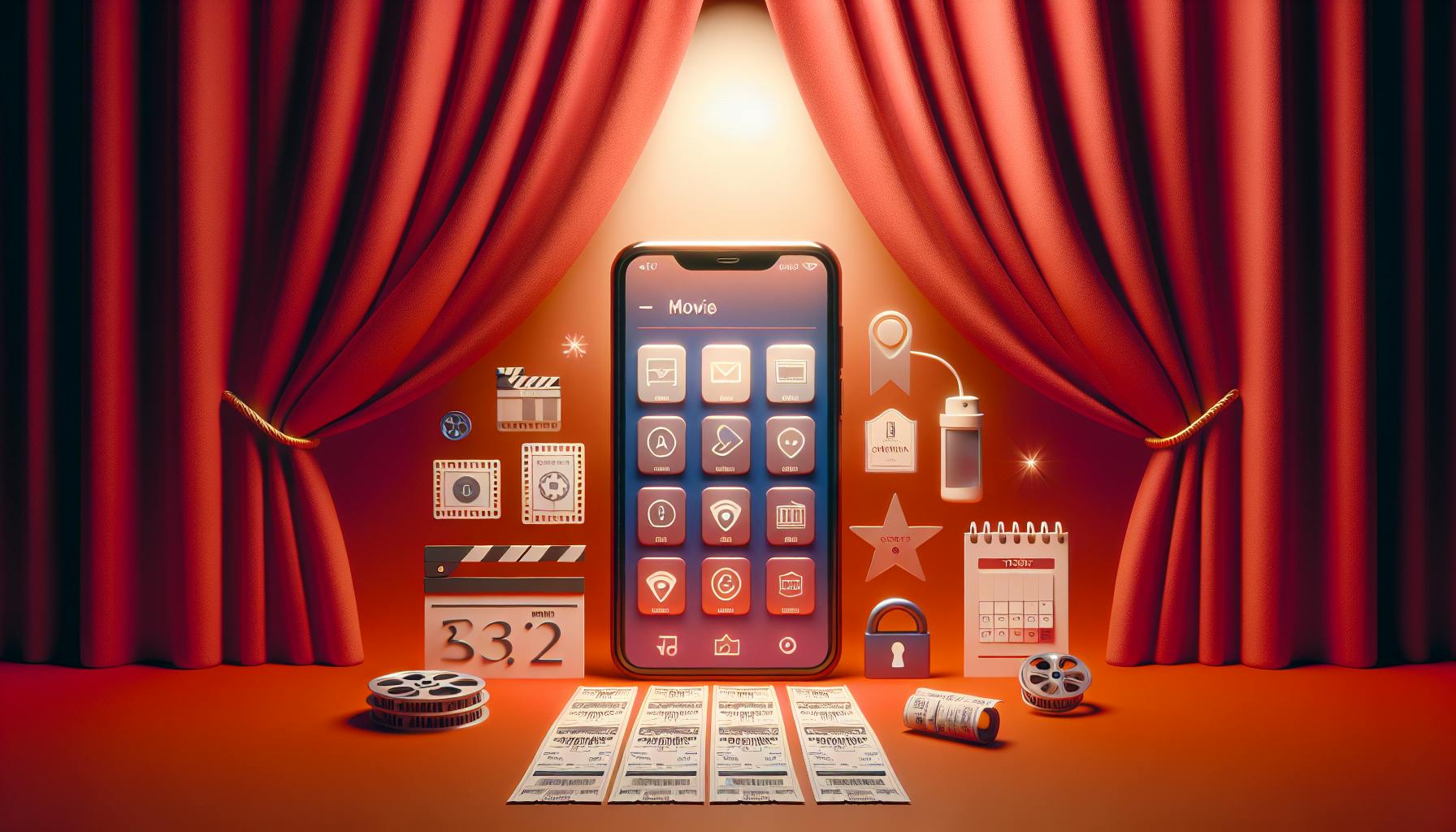Introduction
The movie industry has undergone massive disruption over the past decade with the meteoric rise of on-demand streaming services. Global streaming giants like Netflix and newcomers like Disney+ now dominate at-home entertainment, investing billions in original content and supported by intuitive apps optimized for on-demand viewing.
In contrast, traditional movie theaters and cinemas have struggled to adapt their decades-old business models to shifting consumer preferences. Box office revenues have steadily declined over the past 10 years, dropping nearly 20% from their peak of $11.4 billion in 2002 to $9.3 billion in 2021 according to Motion Picture Association film revenue data. Theater attendance has followed suit, with average moviegoers visiting cinemas only 3.4 times in 2021, continuing a decade-long slide.
Cinemas now face an urgent need to meet modern audiences where they are increasingly spending entertainment time - streaming premium movies and shows via personalized platforms. Integrating custom video streaming solutions into their digital ecosystem provides a compelling opportunity for theaters to deliver flexible viewing experiences beyond the traditional cinema.
This article explores the benefits of video streaming for theaters and key features of robust video platforms. We'll examine how cinemas can leverage streaming to unlock new revenue streams while retaining their core identity as premium destinations for movie lovers.
Challenges Facing Traditional Cinema Models
Cinemas relying solely on physical ticket sales and traditional theater operations face mounting threats on multiple fronts:
Plummeting In-Person Ticket Sales and Attendance
In-theater box office revenues have declined 20% over the past decade as audiences shrink. Average visits to the cinema per person dropped from 5.8 times per year in 2002 to only 3.4 visits in 2021 according to MPAA data. Costly tickets and more at-home options contribute to this slide.
Surging Popularity of Streaming Entertainment
Global streaming platforms like Netflix now boast over 220 million subscribers worldwide. Disney+ added 12 million subscribers in just 3 months after launching. Easy access across devices and binge-worthy originals make streaming the top choice.
Difficulty Attracting Younger Audiences
Over half of audiences aged 18-24 now use online streaming subscription services as their primary way of watching TV. For younger viewers used to on-demand and personalized viewing, traditional cinemas seem outdated.
Lack of Personalized Viewing Options
Unlike streaming platforms offering curated recommendations, cinemas still rely on rigid movie showtimes and limited film choices appealing to general audiences.
Failure to Capitalize on Digital Opportunities
Despite exponential growth in streaming entertainment, cinemas have not successfully pivoted business models to capitalize on emerging digital distribution and viewing behaviors.
Shifting Viewer Habits and Preferences
Younger audiences are rapidly changing how they consume entertainment:
- 49% of consumers aged 18-29 now watch movies primarily via streaming services rather than theaters according to Motion Picture Association data.
- Millennials average 7 hours per week of streaming entertainment versus only 2 hours for live TV.
- 73% prefer watching movies at home rather than theaters according to NATO research.
- Streaming services like Netflix fuel binge-watching behaviors instead of theater visits.
Competition from Streaming Giants
Top streaming platforms are dominating the digital entertainment landscape:
- Netflix invested over $17 billion in content in 2020, including major feature films like The Irishman. They boast over 220 million subscribers globally.
- Disney+ gained 12 million subscribers within 3 months after launching in 2019. Their platform showcases new releases and legacy Disney titles.
- Hulu, now controlled by Disney, has over 45 million subscribers attracted to original series like The Handmaid's Tale.
- These platforms offer intuitive mobile and smart TV apps catering to on-demand viewer preferences.
- Cinemas simply cannot compete on content budgets or personalization capabilities.
Benefits of Custom Video Streaming
Complementing theaters with custom video streaming opens up new opportunities:
Flexible Anytime, Anywhere Viewing
Patrons can access films on-demand via branded apps instead of solely during fixed showtimes. Meet audiences on their schedules.
Personalized Viewing Experiences
Curate customized film collections and recommendations based on individual preferences and behaviors.
Premium Video Content as Competitive Edge
Spotlight niche catalogs and festival titles competitors don't offer. Position theaters as destinations for cinephiles.
New Revenue Streams
Monetize entire libraries beyond box office. Introduce subscription or per-title rental/purchase options.
Strengthened Brand Identity and Loyalty
Deliver a modern omnichannel experience under your cinema's brand. Foster digital engagement and loyalty.
Key Features of Video Streaming Platforms
Robust solutions like Filmgrail provide the core functionality needed:
Media Ingestion and Management
Flexible CMS to ingest content from any source and manage/organize vast libraries.
Secure Encoding and Delivery
Reliable infrastructure for smooth playback across devices. Encoding optimizes streaming quality.
Immersive Viewing Experiences
Apps and sites dynamically adapt to any device from mobile to tablets, web, and connected TVs.
SEO and Discoverability
Optimized metadata and schemas so content surfaces in search and recommendations.
Analytics and Insights
Actionable data to inform programming and experiences. Track most popular titles and viewing behaviors.
Account Management and Payments
Monetization requires seamless financial transactions:
- User registration and account tools for managing profiles and preferences.
- Payment processing integrations to accept subscriptions, title rentals/purchases.
- Flexible billing options including promotions and gift cards.
Content Personalization
Keep viewers engaged via tailored experiences:
- Individual recommendations based on viewing history and machine learning algorithms.
- Curated collections for genres, directors, or themes.
- Social features for sharing, ratings, and reviews.
- Film-focused articles and commentary.
Getting Started with Custom Streaming
Interested cinemas can take initial steps like:
Evaluating Overall Capabilities
Audit your staff skills, tech stack, and infrastructure to support streaming distribution.
Assessing Your Library Assets
Analyze your current catalogs and opportunities for premium licensed content. Look for niche categories and curation opportunities.
Researching Video Service Vendors
Explore providers like Filmgrail offering customized streaming specific to cinemas.
Starting Small with Pilot Programs
Test targeted streaming offerings focused on particular audiences or genres before expanding.
Key Takeaways
In summary, custom streaming allows cinemas to:
- Meet modern audiences' shifting preferences for flexible, personalized viewing.
- Unlock new revenue streams through premium digital libraries beyond box office sales.
- Retain identity as top destinations for movie lovers via differentiated programming.
To learn more about opportunities to integrate streaming, contact the cinema video experts at Filmgrail today. Their customizable platforms empower theaters to adapt in the digital era while leveraging legacy strengths as premium cinematic brands and services.


